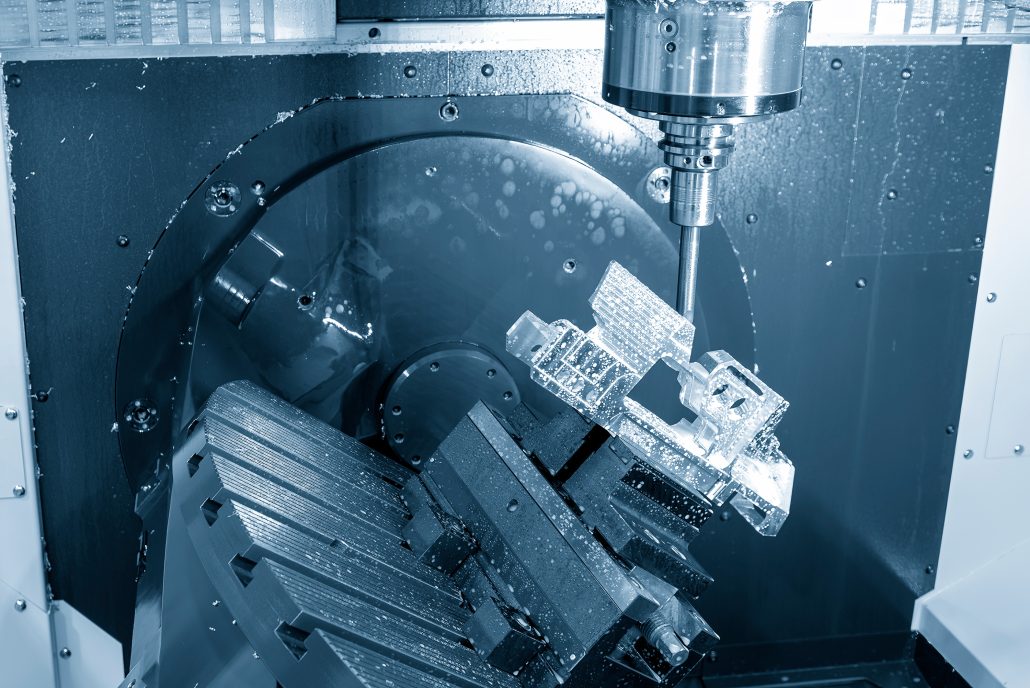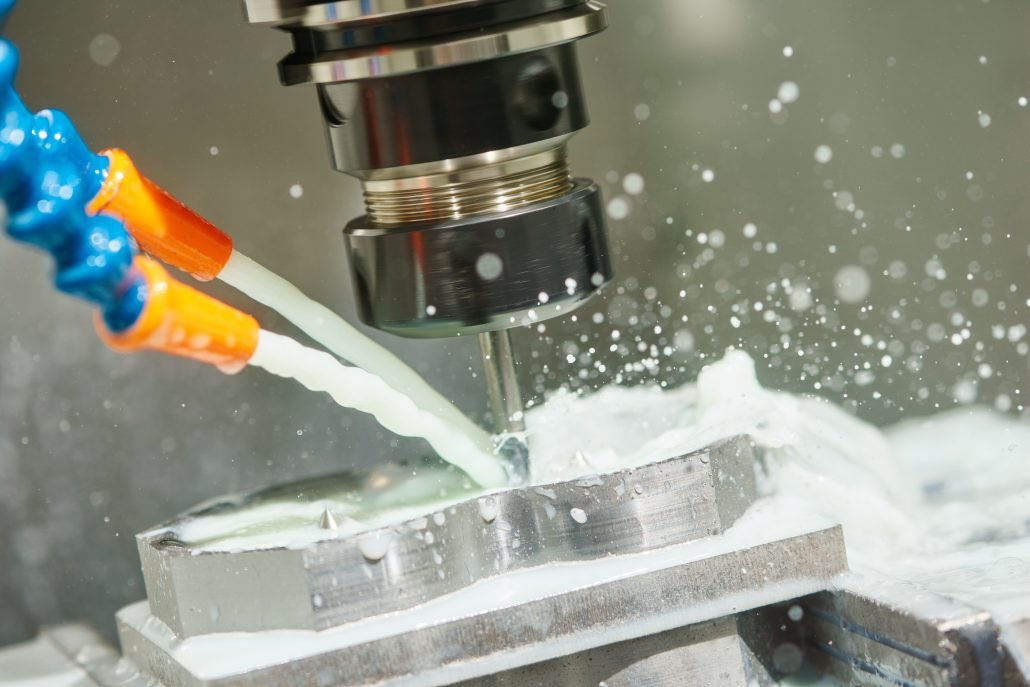Stainless steel and brass are common metal materials, brass is a copper alloy with good malleability and corrosion resistance. In CNC machining, brass can be cut, drilled, milled and turned, so it is suitable for the manufacture of various parts and components. Both machining methods have their own unique features
Only after understanding the properties associated with the project can you choose either of these materials for cnc parts machining, so this article contains all you need to know about stainless steel and brass to compare the two materials and the behavior and differences to help you decide which machining method is better for your needs
Composition and classification difference between stainless steel and brass
After comparing stainless steel machining materials with brass cnc machining materials, manufacturers must know everything about them thoroughly in order to successfully select the right type of machining materials. Therefore, in this section Longsheng Technology will discuss the composition and classification to show the difference between stainless steel machining materials and brass machining materials.

Stainless steel
Stainless steel, also known as stainless steel, is an alloy steel that is resistant to corrosion. It consists of iron, chromium, nickel, carbon and other elements, among which chromium content reached more than 10.5%. The material is characterized by its ability to react with oxygen to form a dense chromium oxide film that resizes oxidative corrosion. Stainless steel can be classified according to its composition and organizational structure, as shown in the following table:
| Classification | Composition And Characteristic |
| Austenitic stainless steel | Chromium content of 12% or more, has good corrosion resistance and strength |
| Ferrite stainless steel | Chromium content lower than 12%, but with higher ferrite phase, has high toughness |
| Martensitic stainless steel | High hardness, high wear resistance and good corrosion resistance |
Stainless steel is widely used, such as medical instruments, aerospace, chemical equipment, kitchenware and tableware, architectural decoration and other fields. Because of its good corrosion resistance and strength, it has been favored by engineering and consumers.
brass
Brass is composed of copper and zinc alloy material, has good electrical conductivity, thermal conductivity and malleability. Brass is generally classified according to its zinc content and machining method, as shown in the following table:
| Classification | Zinc Content | Characteristics |
| Ordinary brass | Zinc below 37% | Oft free-cutting, often used in the manufacture of clocks and watches, instruments and other small parts |
| Brass alloy | Zinc 37-45% | Hardness, high strength and flexibility, often used in the manufacture of pipes, valves, machinery parts, etc |
| High zinc brass | Zinc more than 45% | Good corrosion resistance, is often used to make ornaments, door to wait |
Brass has a wide range of applications, such as electrical equipment, architectural decoration, automobile manufacturing, copper pipes and other fields. However, it should be noted that because brass is easily oxidized, it needs regular cleaning and maintenance when in use.
Although stainless steel and brass are similar in appearance, the properties and uses of the two are very different. The main characteristics of stainless steel are corrosion resistance and high temperature resistance. Stainless steel rarely rusts, making it ideal for kitchen equipment, car parts and medical equipment. Brass has good elasticity and conductivity, so it is suitable for manufacturing electrical and electronic equipment, pipes and fittings, etc.

Price comparison between stainless steel machining and brass cNC machining
Although stainless steel and brass are both widely used materials in manufacturing, their prices vary greatly.
Depending on the market price and availability, the price of stainless steel is above $2,500 per ton, while the price of brass is below $5,000 per ton. In addition, machining costs will also affect the price of finished products, and the cost of stainless steel machining may be higher.
Therefore, when making a product, you need to carefully consider the materials and machiningg methods to be used. Despite the high corrosion resistance and strength of stainless steel, brass may be a more affordable option if you produce products that are not used in a high corrosion environment.
Factors affecting the price of stainless steel machining
Stainless steel machining price is usually determined by the following factors:
Models and thickness of stainless steel: different models and thickness of stainless steel has different mechanical properties and corrosion resistance, in the process of machining need to use different types of cutting tools and special technology, so the price is also different.
machining method: Stainless steel can be processed through a variety of machining methods, such as sheet metal stamping, laser cutting, water knife cutting, welding, etc. Each process has different costs and precision, and therefore different prices.
Quantity of product: Mass production will have lower cost than small batch production because of higher efficiency. Therefore, order quantity is also an important factor affecting the price of stainless steel machining.
machining difficulty: stainless steel machining difficulty is very high, the need for a high degree of professional skills and excellent equipment. Therefore, the more difficult the machining, the higher the price.
Factors affecting the price of brass cnc machining
Compared with stainless steel machining, brass CNC machining price affected by slightly different factors:
Material quality: The composition and quality of brass has a great influence on both the price and quality of machining. Brass of better quality is usually of higher price.
machining difficulty: brass relative to stainless steel is soft, but in CNC machining still need to be careful and delicate operation, each procedure needs to be written, so the need for more skills and time, the price is relatively high.
Material size and number of tops: CNC machines can handle complex geometric shapes, and different sizes can be processed for an additional fee. In addition, the number of pieces processed also affects the price.
Price comparison between different industries
Whether you’re in the auto parts industry, the construction industry, or the aerospace industry, you may need to process stainless steel or brass parts. For companies in these different fields, machining costs can vary considerably.
For example, if you’re a car manufacturer, you can save a lot of money by machining wheels or other small accessories. However, if you are a construction company, you may need to process complex structures or doors and Windows, which can be more expensive due to factors such as materials and equipment costs.
For the aerospace industry, most parts need to be machined with high precision. Therefore, the price gap between stainless steel CNC machining and brass CNC machining will be more obvious.
In the selection of CNC machining process, it is important to clearly understand their own needs, and on this basis to make the best choice. In this case, your product will be of the best quality and cost effective.
Which machining method is better?
Stainless steel cnc machining and brass cnc machining have their advantages and disadvantages. If you need to manufacture high quality and high durability products, then stainless steel cnc machining is a very good choice. Stainless steel cnc machining can produce highly accurate products that can be used in a variety of different applications.
If you need to create decorative and detailed products, brass cnc machining is a very good choice. Brass cnc machining can produce very unique and exquisite products that can be used in fields such as home decoration and jewelry making.

Stainless steel machining relative to the advantages of brass cNC machining
Stainless steel is an alloy steel with steel as its main component and a small amount of other metallic elements, such as chromium, nickel, molybdenum, etc. The composition and proportion of stainless steel determine its unique properties and advantages, such as high strength, high corrosion resistance, high temperature oxidation resistance, easy machining and so on.
Structural strength
Stainless steel has better structural strength than brass. This is because stainless steel is a very good alloy, its composition contains a variety of metals such as chromium, so it is often more difficult to work than brass, but the result is more resistant to deformation. Because of this high strength, stainless steel is usually used in railway, ships, construction and other large projects.
Corrosion resistance
Brass is susceptible to corrosion because it is a plastic material that reacts easily with other metals. On the contrary, stainless steel is specially treated and has excellent properties of resistance to corrosion. This is why, with the exception of storm pipes and a few other applications, brass does not work well in certain environments, such as seawater.
plasticity
Because of its plasticity, brass is a versatile material suitable for a wide variety of machining needs, so brass CNC machining is generally cheaper than stainless steel. However, stainless steel can also be used for cutting, extrusion, cutting and welding. The combination of stainless steel and metal is often stronger than that of brass, and will not show a small amount of breakage over long periods of use.
In general, although brass has good plasticity and low cost, stainless steel has better structural strength and corrosion resistance. In some applications requiring high corrosion resistance and the introduction of high pressure, stainless steel is undoubtedly superior to brass.
Advantages of CNC machining of stainless steel include:
- Crafting tools are more durable
- Higher production precision
- Faster production speed
We can continuously improve production efficiency, save time and cost.
Brass cNC machining relative to stainless steel machining advantages
Brass, which is an alloy of copper and zinc, is softer and more flexible than stainless steel, so it is easier to achieve more similar forms of molding one by one. In addition, brass has gold and red tones not seen in stainless steel, so it has an advantage in design and beautification. Here are the advantages of brass:
Unique tone
The gold and red tones of brass are unique and can be used as decorative and design elements in a variety of situations.
Easy to process
Brass is basically a soft material, easy to process into a complex shaped parts. It is easier to thermoshape than stainless steel, which makes it suitable for more machining methods and treatment forms.
Low price
Brass costs less than stainless steel, so in some cases brass is preferred.
If you need stainless steel and brass CNC machining services, please contact us! We have a professional technical team and efficient machining equipment to ensure the realization of your needs.
FAQ
Stainless steel machining is typically more expensive than CNC brass machining due to the material’s higher production costs. However, this is offset by the material’s longevity, which reduces the need for maintenance and replacement.
Brass is a more attractive metal than steel, and it’s often used in decorative objects, musical instruments, and jewelry. It has a warm, golden tone that patinas over time, giving it a distinctly antique look. Stainless steel, on the other hand, is less suited for decorative purposes due to its silvery-grey hue.
Stainless steel is a harder material than brass, and it requires more energy and force to machine. It also generates more heat during machining, necessitating greater attention to tooling, cooling, and lubrication. On the other hand, CNC brass machining is relatively easy and straightforward, allowing for faster turnarounds and lower production costs.


